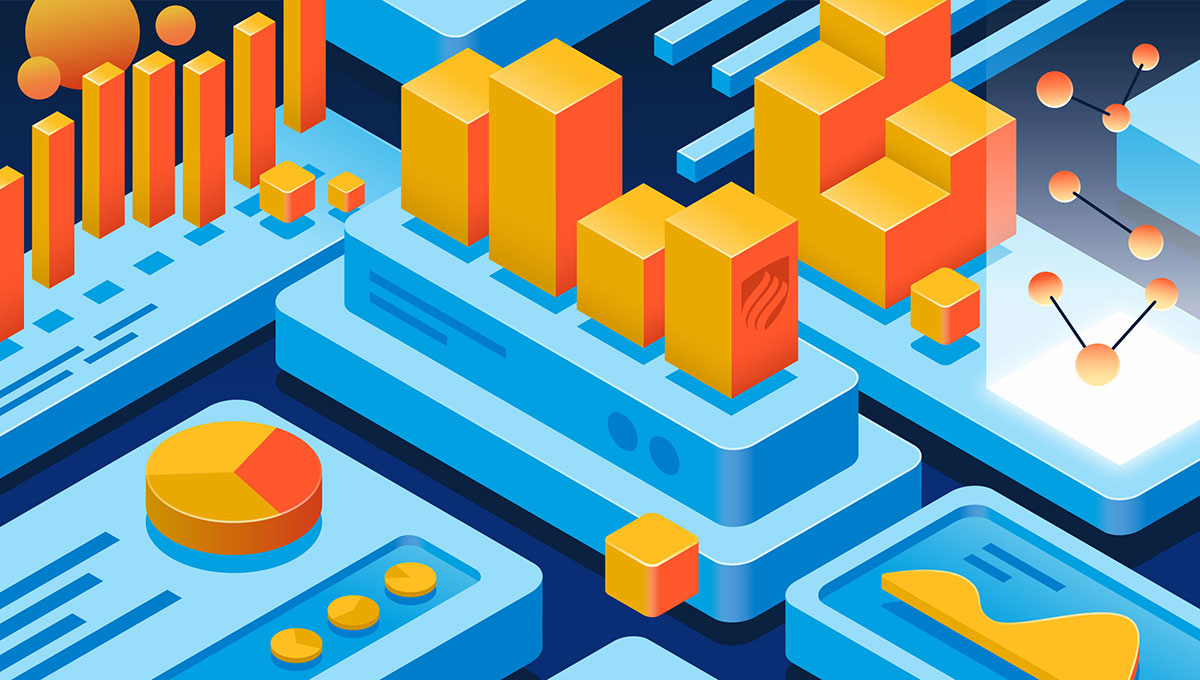3 Data Visualization Resources — and One Powerful Testimonial
UNLIMITED DATA | BY JAMES KULICH | 5 MIN READ

Images tell stories. From simple pop-up books for children to today’s most sophisticated visual displays, pictures are certainly worth a thousand words.
- Yale Professor Emeritus Edward R. Tufte, a pioneer in information design and data visualization, shows us how storytelling with data can be raised to high art. Tufte’s books—with vivid chapter titles such as Visual and Statistical Thinking: Displays of Evidence for Making Decisions and Explaining Magic: Pictorial Instructions and Disinformation Design—are filled with compelling visual data stories, often in low-tech form and sometimes dating back centuries.
- Tableau, a leading provider of data visualization software, publishes a list of blogs that showcase an almost unlimited range of examples of modern data visualization in action. Tableau’s Viz-of the-Day recently featured displays created by ordinary people. A sampling of titles: The Economic Output of U.S. Counties, Exploring Taylor Swift’s Song Lyrics, and The Hunt for Habitable Planets.
- Tools for producing rich and engaging visualizations continue to emerge, both commercially and in the open source community. A range of Python data visualization libraries is now available—such as Sweetviz, which can be used to create quick high-level exploratory analyses, and plotly, which enables animated interactive data displays. Will Koehrsen’s recent post on Towards Data Science offers some illustrations of these packages in use.
From Data Stories to Data Action
Today, data visualizations are ubiquitous. Some seek to inform, to entertain, or to persuade. In data science, we are particularly interested in data visualizations that reveal useful patterns that can be further mined. We look to create value by moving from stories to useful action.
Anthony Johnson is a Senior Data Consultant for the specialty pharmacy firm Optum and an Elmhurst University Master’s in Data Science alumnus. He offers some interesting thoughts on how this path from visualization to action can be realized in health care:
One of the most important practices in health care that I have learned is the diversification of insight. In the 1850s John Snow, a pioneer of epidemiology, used what we now call concepts of data science to visualize the hot spots of a large cholera outbreak. To do this effectively, he had to compile information (data) he initially knew, new information he discovered, and information developed by others to paint an accurate image of the problem—the first step in formulating possible resolutions. At a high level, that is the strategy I bring to the table as I engage with data.
Data visualization is a perfect blend of art and science. It must be done in a way that is statistically sound and reproducible. However, it is essential that you create a picture that is worth being seen. It should quickly answer the question, “Why is this important?” This is all about the art of perception. Knowing your audience is key.
In today’s world, there is no shortage of information. We have the ability to see more of what we once could not. We also understand how valuable a specific insight can be. It is my goal as a data science practitioner to highlight those insights to stakeholders in the most unbiased way. For me, that is by way of the data.
In our conversation a little while ago, Anthony spoke of the capability data professionals have to foster insight in an organization, and their responsibility to address gaps between “what is verbalized and what is actual.” As Anthony eloquently said, “Visualizations can articulate in a short amount of time both a problem and a solution.”
On a more personal level, Anthony grew up in Chicago, witnessing both the vibrancy and the challenges of city life. Anthony spoke of how his experiences enable him to see into data in ways others might not. As Anthony noted, no matter how accurate our predictions may seem, “things change, as we are still dealing with humans.” That is perhaps the most essential perspective data scientists can bring to the work we do.
Keeping the Data Honest
As is the case with any data science technique, visualizations are not panaceas. They can sometimes miss hidden factors behind apparent relationships. Only by carefully assessing the balance between the risks and rewards involved can we determine whether the evidence provided by a visualization is strong enough to warrant action or if a deeper dive into a full model is necessary.
As high levels of uncertainty continue in our world, so does the importance of the basics in analytical efforts. Many organizations simply need to get a clear picture of reality as it now stands in order to develop a few reasonable scenarios for what might come next.
Data visualizations that are honest, accurate, and well-designed can go a long way toward meeting these current needs. As Anthony said, “Whoever owns the numbers owns the story.”
In our Master’s in Data Science and Analytics program, we take a comprehensive approach to the practice of data science. Our curriculum weaves together technical skills and organizational perspectives in ways that prepare our students to create deep value from data in whatever settings they might practice.
Learn more about our program today. Simply fill out the form below!
